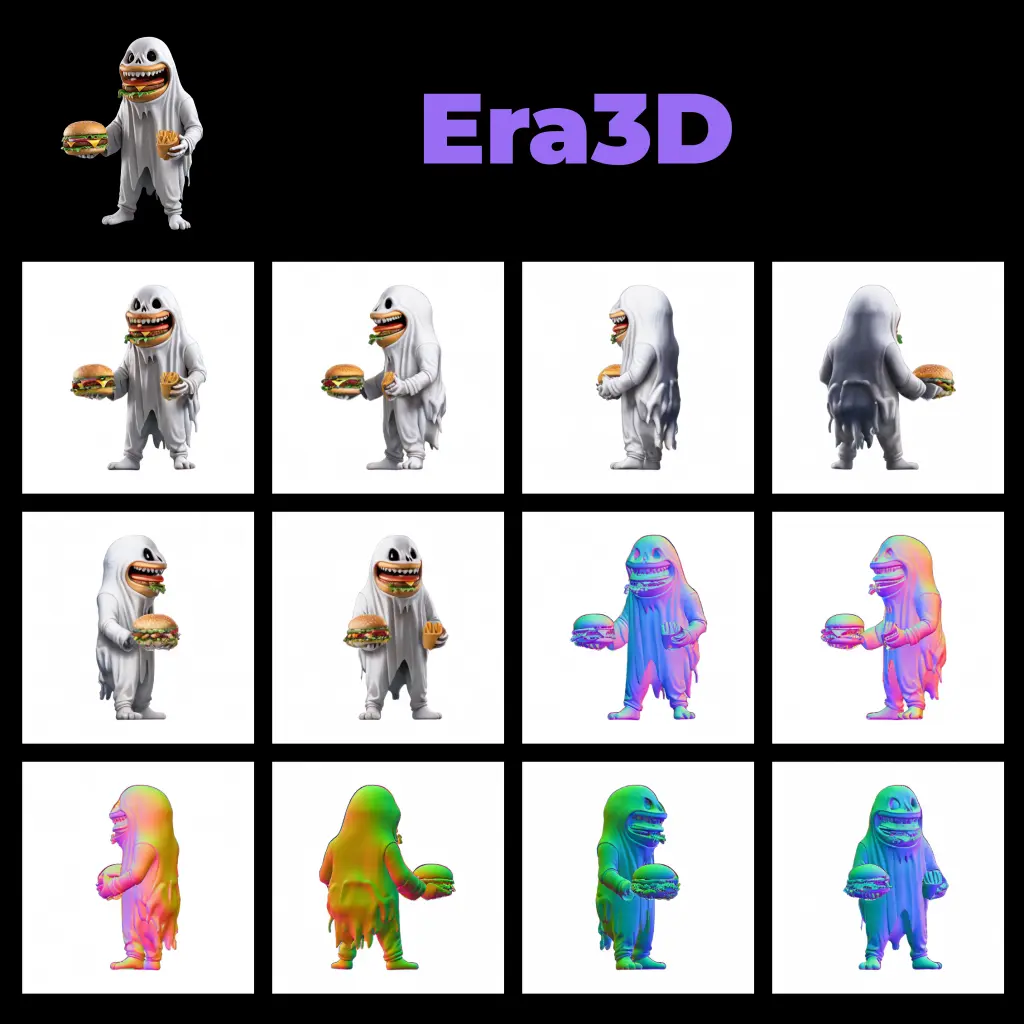ComfyUI Node: CLIPLoaderMultiGPU
CLIPLoaderMultiGPU
Categorymultigpu
pollockjj (Account age: 3830days) Extension
ComfyUI-MultiGPU Latest Updated
2025-04-17 Github Stars
0.26K
How to Install ComfyUI-MultiGPU
Install this extension via the ComfyUI Manager by searching for ComfyUI-MultiGPU- 1. Click the Manager button in the main menu
- 2. Select Custom Nodes Manager button
- 3. Enter ComfyUI-MultiGPU in the search bar
Visit ComfyUI Online for ready-to-use ComfyUI environment
- Free trial available
- 16GB VRAM to 80GB VRAM GPU machines
- 400+ preloaded models/nodes
- Freedom to upload custom models/nodes
- 200+ ready-to-run workflows
- 100% private workspace with up to 200GB storage
- Dedicated Support
CLIPLoaderMultiGPU Description
Facilitates loading CLIP models across multiple GPUs for efficient AI art generation.
CLIPLoaderMultiGPU:
The CLIPLoaderMultiGPU node is designed to facilitate the loading of CLIP models across multiple GPUs, optimizing the performance and efficiency of AI art generation tasks. This node is particularly beneficial for users who work with large-scale models or require high computational power, as it distributes the workload across multiple GPUs, thereby reducing processing time and enhancing the overall performance. The node leverages the capabilities of the CLIP model, which is known for its ability to understand and generate images from textual descriptions, making it a powerful tool for AI artists. By utilizing this node, you can seamlessly integrate CLIP models into your multi-GPU setup, ensuring that your creative processes are both efficient and effective.
CLIPLoaderMultiGPU Input Parameters:
clip_name
The clip_name parameter specifies the name of the CLIP model you wish to load. This parameter is crucial as it determines which model will be utilized for your task. The available options for this parameter are derived from a list of filenames that the system can access, ensuring that you can select from a range of pre-existing models. The choice of model can significantly impact the results, as different models may have varying capabilities and performance characteristics. There are no explicit minimum or maximum values, but the selection should be made from the available list of models.
type
The type parameter defines the type of CLIP model to be loaded, with options including "stable_diffusion", "stable_cascade", "sd3", "stable_audio", "mochi", "ltxv", "pixart", and "wan". This parameter is essential as it dictates the specific variant of the CLIP model that will be used, each tailored for different applications or tasks. For instance, "stable_diffusion" might be optimized for generating high-quality images, while "stable_audio" could be more suited for audio-related tasks. Selecting the appropriate type ensures that the model's capabilities align with your specific needs, thereby optimizing the output quality and relevance.
CLIPLoaderMultiGPU Output Parameters:
CLIP
The CLIP output parameter represents the loaded CLIP model, ready for use in your AI art generation tasks. This output is crucial as it provides the functional model that will process your inputs and generate the desired outputs. The CLIP model is known for its ability to understand and generate content based on textual descriptions, making it a versatile tool for various creative applications. The output model can be directly used in subsequent nodes or processes, allowing for seamless integration into your workflow.
CLIPLoaderMultiGPU Usage Tips:
- Ensure that your system is equipped with multiple GPUs to fully leverage the capabilities of the
CLIPLoaderMultiGPUnode, as this will significantly enhance processing speed and efficiency. - Select the appropriate
typeof CLIP model based on your specific task requirements, as different types are optimized for different applications, such as image generation or audio processing.
CLIPLoaderMultiGPU Common Errors and Solutions:
ModuleNotFoundError: No module named 'ComfyUI-GGUF'
- Explanation: This error occurs when the required module for GGUF support is not installed or not found in the system.
- Solution: Ensure that the
ComfyUI-GGUFmodule is installed and properly configured in your environment. You may need to check your installation paths or reinstall the module.
FileNotFoundError: CLIP model file not found
- Explanation: This error indicates that the specified CLIP model file could not be located in the system.
- Solution: Verify that the
clip_nameparameter is correctly set to a valid model file name from the available list. Ensure that the model files are correctly placed in the designated directory.
ValueError: Invalid CLIP type specified
- Explanation: This error arises when an unsupported or incorrect
typeis provided for the CLIP model. - Solution: Double-check the
typeparameter to ensure it matches one of the supported options, such as "stable_diffusion" or "sd3". Adjust the parameter to a valid type if necessary.
CLIPLoaderMultiGPU Related Nodes
RunComfy is the premier ComfyUI platform, offering ComfyUI online environment and services, along with ComfyUI workflows featuring stunning visuals. RunComfy also provides AI Playground, enabling artists to harness the latest AI tools to create incredible art.



